#Mike Stokey
Explore tagged Tumblr posts
Text

Ran across a great photo of Peter, with Mike Stokey and Juliette Prowse, on a game show they were a part of in 1963 called, "Stumped the Stars."
56 notes
·
View notes
Text

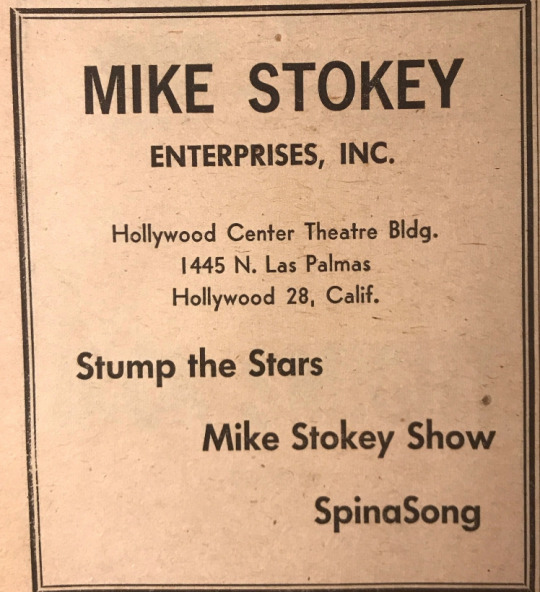

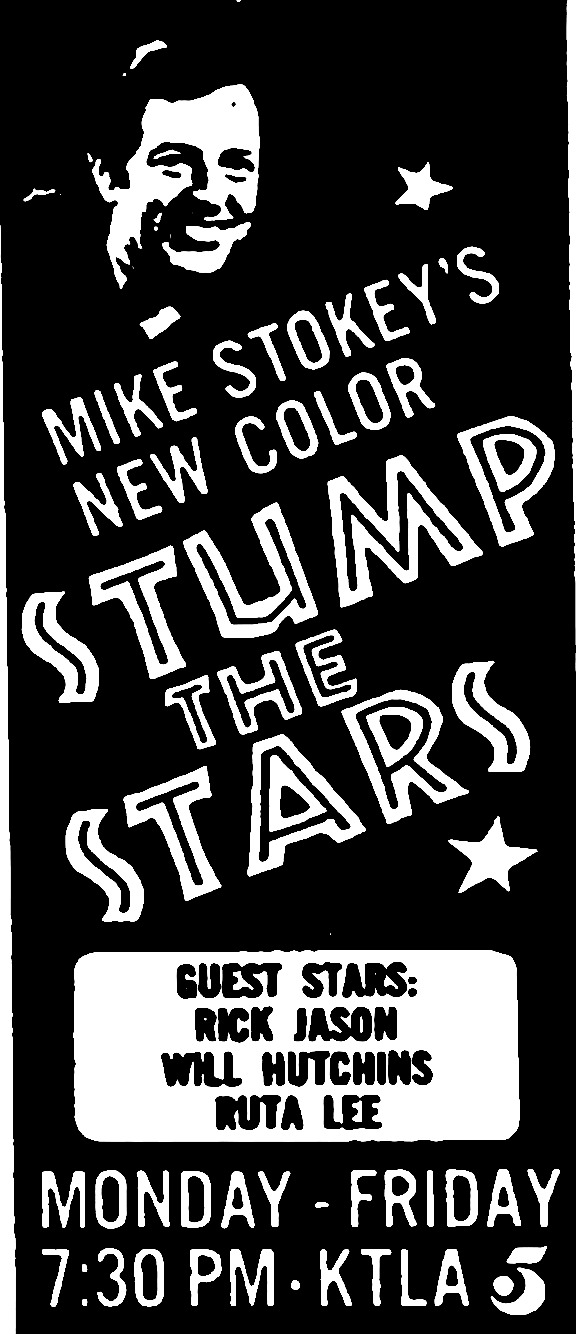
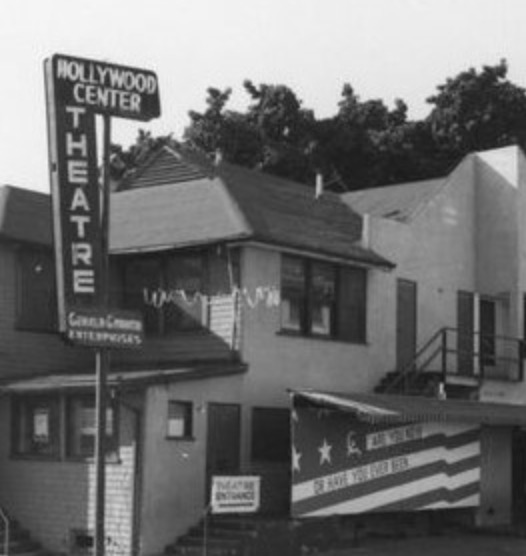



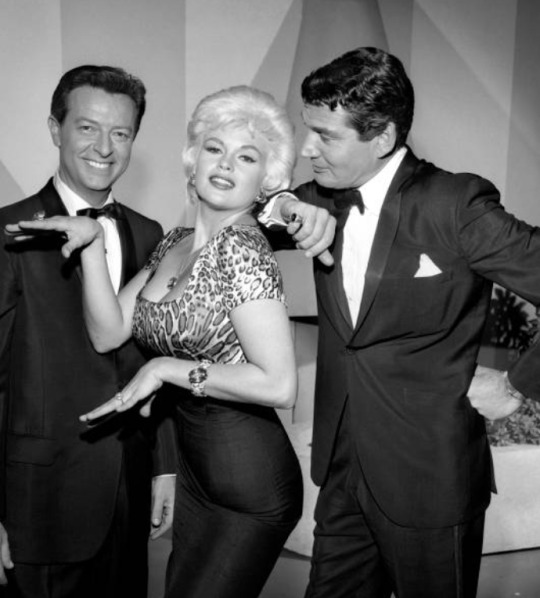

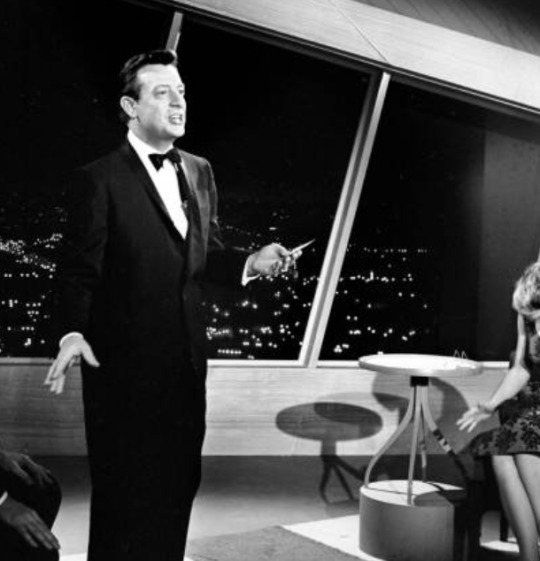



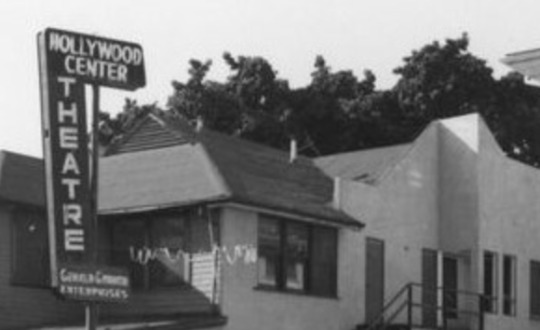


Mike Stokey Enterprises Inc. operated out of 1445 N. Las Palmas: The Hollywood Center Theatre Bldg.
It burned down last year.
10 notes
·
View notes
Note
Do you know where one could watch Vincent on the Mike Stokey Pantomime Show? I have found three episodes on YouTube but I think he was in a lot more and I cannot find them.
I've been only able to find a couple, myself. The ones that I've seen - are below.
youtube
youtube
https://archive.org/details/PantomimeQuiz1951
11 notes
·
View notes
Text
@ilovemesomevincentprice , thought of you 😊
15 notes
·
View notes
Text
TOO MANY TELEVISION SETS
October 14, 1949

"Too Many Television Sets” (aka “Liz and George Order a Television Set” aka “Television”) is episode #58 of the radio series MY FAVORITE HUSBAND broadcast on October 14, 1949.
This was the sixth episode of the second season of MY FAVORITE HUSBAND. There were 43 new episodes, with the season ending on June 25, 1950.
Synopsis ~ Liz can't get George interested in buying a television set, until they spend an evening at the Atterburys, who have one. With his interest piqued, George arranges one be sent over on trial. Little does he know Liz has done the same thing - as have the Atterburys!
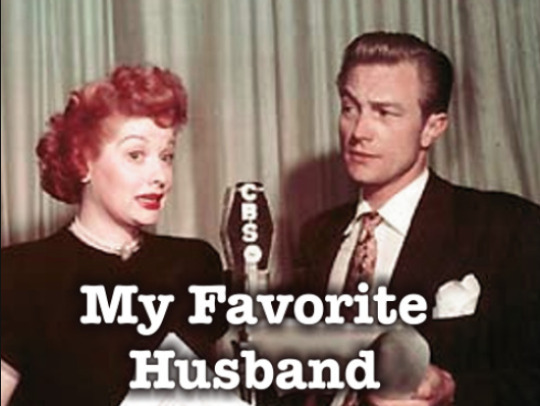
“My Favorite Husband” was based on the novels Mr. and Mrs. Cugat, the Record of a Happy Marriage (1940) and Outside Eden (1945) by Isabel Scott Rorick, which had previously been adapted into the film Are Husbands Necessary? (1942). “My Favorite Husband” was first broadcast as a one-time special on July 5, 1948. Lucille Ball and Lee Bowman played the characters of Liz and George Cugat, and a positive response to this broadcast convinced CBS to launch “My Favorite Husband” as a series. Bowman was not available Richard Denning was cast as George. On January 7, 1949, confusion with bandleader Xavier Cugat prompted a name change to Cooper. On this same episode Jell-O became its sponsor. A total of 124 episodes of the program aired from July 23, 1948 through March 31, 1951. After about ten episodes had been written, writers Fox and Davenport departed and three new writers took over – Bob Carroll, Jr., Madelyn Pugh, and head writer/producer Jess Oppenheimer. In March 1949 Gale Gordon took over the existing role of George's boss, Rudolph Atterbury, and Bea Benaderet was added as his wife, Iris. CBS brought “My Favorite Husband” to television in 1953, starring Joan Caulfield and Barry Nelson as Liz and George Cooper. The television version ran two-and-a-half seasons, from September 1953 through December 1955, running concurrently with “I Love Lucy.” It was produced live at CBS Television City for most of its run, until switching to film for a truncated third season filmed (ironically) at Desilu and recasting Liz Cooper with Vanessa Brown.
MAIN CAST
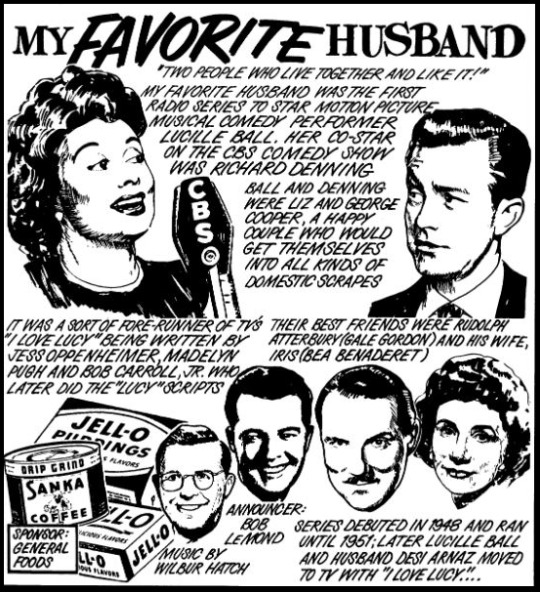
Lucille Ball (Liz Cooper) was born on August 6, 1911 in Jamestown, New York. She began her screen career in 1933 and was known in Hollywood as ‘Queen of the B’s’ due to her many appearances in ‘B’ movies. With Richard Denning, she starred in a radio program titled “My Favorite Husband” which eventually led to the creation of “I Love Lucy,” a television situation comedy in which she co-starred with her real-life husband, Latin bandleader Desi Arnaz. The program was phenomenally successful, allowing the couple to purchase what was once RKO Studios, re-naming it Desilu. When the show ended in 1960 (in an hour-long format known as “The Lucy-Desi Comedy Hour”) so did Lucy and Desi’s marriage. In 1962, hoping to keep Desilu financially solvent, Lucy returned to the sitcom format with “The Lucy Show,” which lasted six seasons. She followed that with a similar sitcom “Here’s Lucy” co-starring with her real-life children, Lucie and Desi Jr., as well as Gale Gordon, who had joined the cast of “The Lucy Show” during season two. Before her death in 1989, Lucy made one more attempt at a sitcom with “Life With Lucy,” also with Gordon.
Richard Denning (George Cooper) was born Louis Albert Heindrich Denninger Jr., in Poughkeepsie, New York. When he was 18 months old, his family moved to Los Angeles. Plans called for him to take over his father's garment manufacturing business, but he developed an interest in acting. Denning enlisted in the US Navy during World War II. He is best known for his roles in various science fiction and horror films of the 1950s. Although he teamed with Lucille Ball on radio in “My Favorite Husband,” the two never acted together on screen. While “I Love Lucy” was on the air, he was seen on another CBS TV series, “Mr. & Mrs. North.” From 1968 to 1980 he played the Governor on “Hawaii 5-0″, his final role. He died in 1998 at age 84.
Gale Gordon (Rudolph Atterbury) had worked with Lucille Ball on “The Wonder Show” on radio in 1938. One of the front-runners to play Fred Mertz on “I Love Lucy,” he eventually played Alvin Littlefield, owner of the Tropicana, during two episodes in 1952. After playing a Judge in an episode of “The Lucy-Desi Comedy Hour” in 1958, he would re-team with Lucy for all of her subsequent series’: as Theodore J. Mooney in ”The Lucy Show”; as Harrison Otis Carter in “Here’s Lucy”; and as Curtis McGibbon on "Life with Lucy.” Gordon died in 1995 at the age of 89.
Bea Benadaret (Iris Atterbury) was considered the front-runner to be cast as Ethel Mertz but when “I Love Lucy” was ready to start production she was already playing a similar role on TV’s “The George Burns and Gracie Allen Show” so Vivian Vance was cast instead. On “I Love Lucy” she was cast as Lucy Ricarodo’s spinster neighbor, Miss Lewis, in “Lucy Plays Cupid” (ILL S1;E15) in early 1952. Later, she was a success in her own show, “Petticoat Junction” as Shady Rest Hotel proprietress Kate Bradley. She starred in the series until her death in 1968.
Ruth Perrott (Katie, the Maid) was also later seen on “I Love Lucy.” She first played Mrs. Pomerantz, a member of the surprise investigating committee for the Society Matrons League in “Pioneer Women” (ILL S1;E25), as one of the member of the Wednesday Afternoon Fine Arts League in “Lucy and Ethel Buy the Same Dress” (ILL S3;E3), and also played a nurse when “Lucy Goes to the Hospital” (ILL S2;E16). She died in 1996 at the age of 96.
Bob LeMond (Announcer) also served as the announcer for the pilot episode of “I Love Lucy”. When the long-lost pilot was finally discovered in 1990, a few moments of the opening narration were damaged and lost, so LeMond – fifty years later – recreated the narration for the CBS special and subsequent DVD release.
GUEST CAST

Jay Novello (Joe Beckett, the Atterburys’ Neighbor) would appear on “I Love Lucy” as superstitious Mr. Merriweather in “The Seance" (ILL S1;E7), nervous Mr. Beecher in “The Sublease” (ILL S3;E31), and Mario the gondolier in “The Visitor from Italy” (ILL S6;E5). He also appeared on two episodes of “The Lucy Show,” but dapper Novello is probably best remembered for playing Mayor Lugatto on “McHale’s Navy” in 1965.
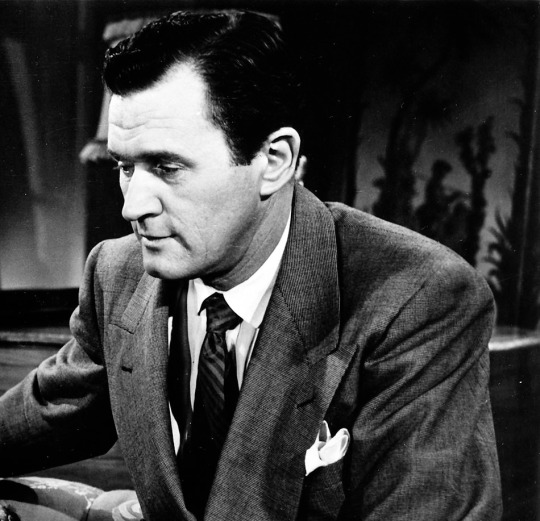
Wally Maher (Mr. Trimble) appeared on radio as the title character in the series “The Adventures of Michael Shayne, Private Detective”. In 1947 he appeared on radio with Lucille Ball in “Dark Corner”. Earlier in 1949, he was heard on “My Favorite Husband” in “Vacation Time.” He was a regular on “Let George Do It” and “Lineup” and was frequently heard on “The Cavalcade of America” and “Lux Radio Theatre.” Maher passed away in December 1951, only 43 years old.
Although the original Michael Shayne, the role was later played by Richard Denning (George Cooper).

Peter Leeds (TV Deliveryman) was born in Bayonne, NJ, and will also be heard on “My Favorite Husband in “Mother In-Law” in November 1949 and “Dance Lessons” in June 1950. He will be seen as the Reporter questioning the Maharincess of Franistan in “The Publicity Agent” (ILL S1;E31). He starred with Lucy in the films The Long, Long Trailer (1953) and The Facts of Life (1960) with Bob Hope. Coincidentally, he also appeared in “Lucy and Bob Hope” (ILL S6;E1) as well as an episode of “Here’s Lucy” in 1971.
EPISODE
ANNOUNCER: “As we look in on the Coopers, dinner is over. George Cooper is in the living room reading the paper. Liz Cooper is in the kitchen talking to Katie, the maid.”
Liz tells Katie that she has a plan to get George to buy her a television set. She is going to hold up a big glass pie plate in front of her face and pretend like she’s a television wrestler.
LIZ: “Do I look like television?” KATIE: “Well your face is all wavy and distorted.” LIZ: “I look like television alright.”
Liz enters the living room with the pie plate in front of her face, but George thinks she is a washing machine.

Lucille Ball actually voiced a washing machine named Lina for a Westinghouse industrial film titled “Ellis in Freedomland” (1952). In 1958, she hid inside a washing machine at the end of “Lucy Buys Westinghouse”, another industrial film for the appliance manufacturer.
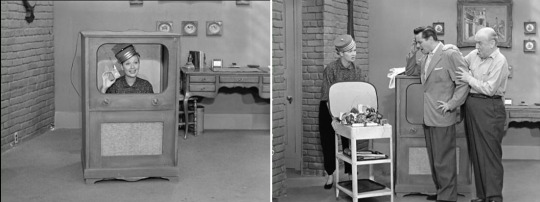
In 1952′s “Lucy Does a TV Commercial” (ILL S1;E30), Lucy Ricardo dispenses with the pie plate and disembowels her television set to look like she’s on the air! Like George, Ricky isn’t buying it.
George guesses that Liz is supposed to be a sailor looking out of a port hole, but warns her that he is not going to buy a television set, effectively ending the conversation. Liz says she is a social pariah because she doesn’t have a television set.
LIZ: “I never know who won the fights or what Kukla and Fran are doing to Ollie.”
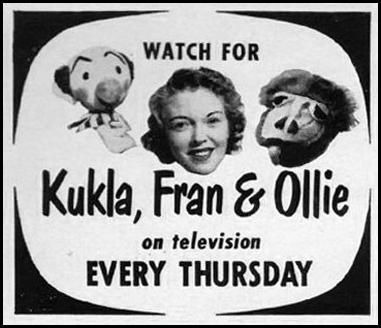
“Kukla, Fran, and Ollie” was a children’s television show created by Burr Tillstrom that aired from 1947 to 1957. Kukla and Ollie were puppets and actress Fran Allison interacted with them. The show won a 1949 Peabody Award and went on to win two Emmys.
George suggests Liz read the newspaper or listen to the radio instead.
LIZ: “Television is taking the place of the newspaper.” GEORGE: “It is, huh? Well, I’d like to see you wrap the garbage in a television set!”

Before the advent of plastic garbage bags, food waste from the kitchen was generally wrapped in old newspapers before being deposited in the trash bin outside the home.
LIZ: “Every house on the block has an aerial. Our house looks positively naked.”

Before cable television and internet streaming, homes received television broadcast signals via an antenna (aerial) on the roof. In “Lucy Puts Up a TV Antenna” (TLS S1;E9) Lucy Carmichael decides to save the cost of an installation and erect the aerial herself - to disastrous results.
George agrees to buy the aerial - but not the television set.
LIZ: “Oh, great, that’ll fool everybody. Before we go out at night we can peel onions so our eyes will be bloodshot!”
Liz asks George to buy him an apple box instead.
LIZ: “If I have to watch it [TV] through a store window, at least I’ll have something to sit on.”

Before television sets became affordable to the general public, it was not uncommon to find people gathered in front of an appliance store window to view it from the street.
Liz answers the telephone. It is Iris, who brags about her brand new television set, which was delivered the day before.
IRIS: “I did my knitting last night with Ed Wynn; I had breakfast with Tex and Jinx; and this afternoon I took a bath with Hopalong Cassidy!”

“The Ed Wynn Show” was a variety show broadcast from September 22,1949 to July 4, 1950 on the CBS Television Network. Comedian and former vaudevillian Ed Wynn was the star of the program. Lucille Ball and Desi Arnaz made their television debut as a couple on the show on Christmas Eve 1949, just a few weeks after this episode of “My Favorite Husband”.

“Tex and Jinx” were Eugenia “Jinx” Falkenberg and her husband John “Tex” McCRary. The couple were popular radio hosts who began on television in January 1947.

“Hopalong Cassidy” made the leap from books and movies to the small screen on June 24, 1949, kicking off the legacy of the Western on television. These were not new, but simply cut-down versions of the feature films that were in cinemas from 1935 to 1948. The film / TV series had William Boyd in the title role. A new TV series (also starring Boyd) with newly-filmed adventures, began in 1952.
Iris’s comment about ��taking a bath with Hopalong Cassidy” gets a big reaction from the “My Favorite Husband” studio audience not used to salacious innuendo.
Iris comes up with an idea to help Liz convince George to buy her a television set. She invites the Coopers to come over, where their TV will be showing a football game. George will naturally see the joys of owning a TV and give in!
Instead of Iris or Rudolph, the Atterbury’s front door is answered by their neighbor, Joe Beckett (Jay Novello), the local TVM (television moocher). He says they just missed the big brawl!
GEORGE: “Mr. and Mrs. Atterbury?” JOE: “No. The Terrible Turk and Gorgeous George!”

Wrestling matches were very popular on radio and early television, producing such colorful wrestlers as the Terrible Turk and Gorgeous George. George Raymond Wagner (1915–63), was known as Gorgeous George because of his long blonde hair. He was mentioned on “I Love Lucy” in “Pioneer Women” (ILL S1;E25) and “Ricky’s Movie Offer” (ILL S4;E6). In 1949, Republic Pictures released a film starring Gorgeous George. Laurence LeBell (1907-48) was known as Ali Alaba, The Terrible Turk, a name that was used by many wrestlers from the late 19th century onwards. He died in a car crash just weeks after this episode aired.
Joe warns the Coopers not to sit behind Iris because they only have a ten inch screen. (Liz adds that Iris has a 16″ neck.) He advises that they visit the Schraders who watch “Pantomime Quiz” and serve sandwiches. The Andersons have beer, but you have to watch Western movies.

“Pantomime Quiz” (later titled “Stump the Stars”), was a television game show hosted by Mike Stokey. Running from 1947 to 1959, it has the distinction of being one of the few television series to air on all four TV networks during the Golden Age of Television. Lucille Ball is reported to have been on the series in December 1947, which would make it her television debut.
George realizes Liz’s scheme but is insistent that he won’t watch television. When he hears a football game is on, however, he is intrigued, and decides to see “how bad it looks”.
Liz’s incessant chattering makes Mr. Atterbury miss several key plays in the game. Mr. Beckett is back but then the picture suddenly goes black! They have to imagine the game and the commercials.
ANNOUNCER: “Liz’s plan to get George interested in television has blown a fuse. Right now, Liz is on her way downtown to drown her sorrows by buying a new hat...”
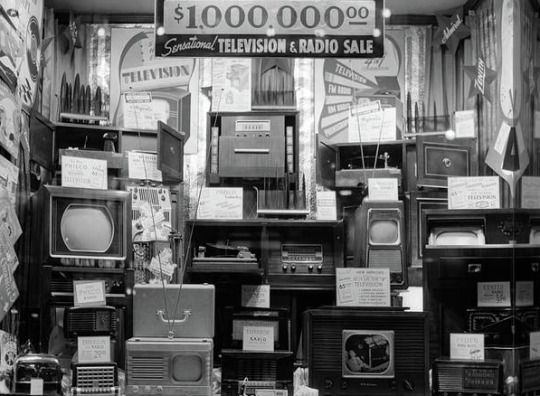
On her way down Sheridan Boulevard, Liz stops in front of a Trimble’s Appliance Store to gaze at the television in the window. An elderly man stops to chat with her about the joys of television. He convinces her to go in and ask about buying one. Of course, he turns out to be Mr. Trimble himself. She tells him to send over a set on trial.
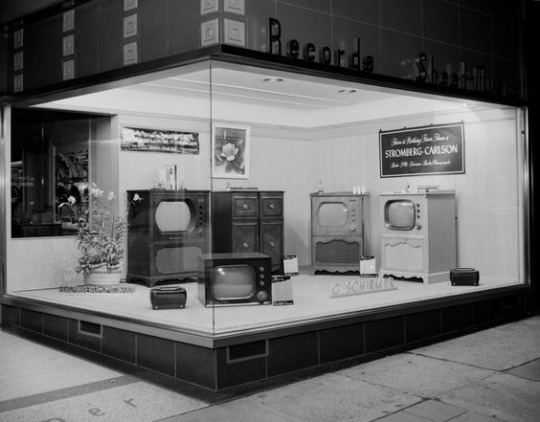
Later that day, George finds himself in front of the same store, where he encounters the same elderly man! Needless to say, Mr. Trimble is successful in selling another set to George! Mr. Trimble thinks the address sounds familiar, but isn’t sure.

Still later, the Atterburys are doing the marketing when they stop in front of Trimble’s Appliance Store. Mr. Atterbury, already having a set, is convinced to send one to George Cooper. Mr. Trimble is now positive that he’s gotten the same address three times. He thinks he is being tricked and vows that he will only send over one TV set on trial, not three.
After dinner, the Coopers decide to stay in for the evening. The doorbell rings. Unbeknownst to one another, they both are expecting a TV delivery, but instead, it is the Atterburys. A moment later the bell rings again and a deliveryman (and Mr. Beckett) is there with one new television set. Naturally, the Atterburys, Liz, and George, all think they are the ones who bought the set!
The Atterburys think the Coopers are ungrateful and they decide to leave. Rudolph tries to take the TV set with him, but the set is damaged in the tussle.
LIZ: “You’re right Iris, this IS the television set you sent out!”
This ending is reminiscent of when the Ricardos and Mertzes argue over who broke a TV set Fred and Ethel gave Lucy and Ricky as a gift. They, too, argue over ownership of the set, until it is irreparably damaged!
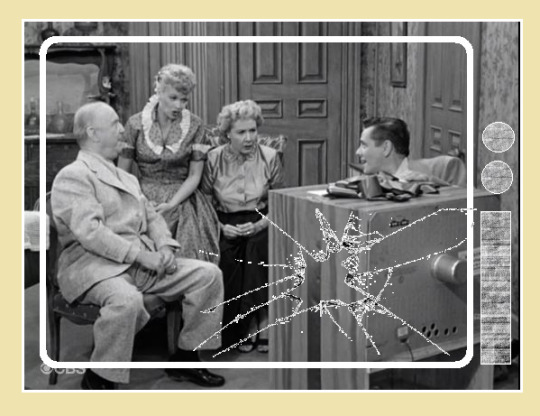
LUCY: “Look what happened to YOUR television set!”
#My Favorite Husband#Television#1949#Radio#Television Set#Pantomime Quiz#Lucille Ball#Richard Denning#Bea Benadaret#Ruth Perrott#Gale Gordon#Bob LeMond#Jay Novello#Peter Leeds#Mike stokey#Gorgeous George#The Terrible Turk#Hopalong Cassidy#Tex and Jinx#Ed Wynn#Kukla Fran and Ollie#Wally Maher
7 notes
·
View notes
Photo

Eartha Kitt on the gameshow “Pantomime Quiz” with Mike Stokey and Robert Clary ca, 1960. Courtesy of @mptvinfocus
11 notes
·
View notes
Photo
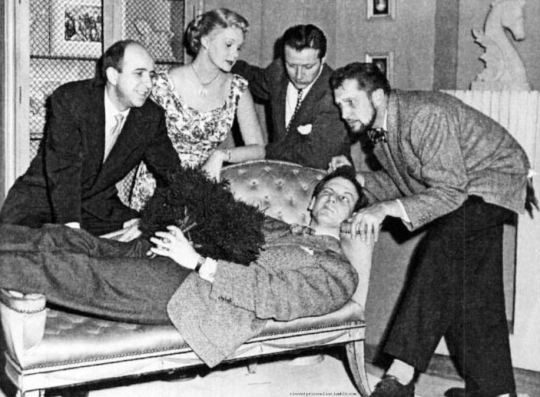

Vincent Price || Promo || “Pantomime Quiz” || From 'Hans Conried: A Biography' by Suzanne Gargiulo || 1950 || 2 pix
With Frank DeVol, Adele Jergens, Mike Stokey and Hans Conried.
23 notes
·
View notes
Text
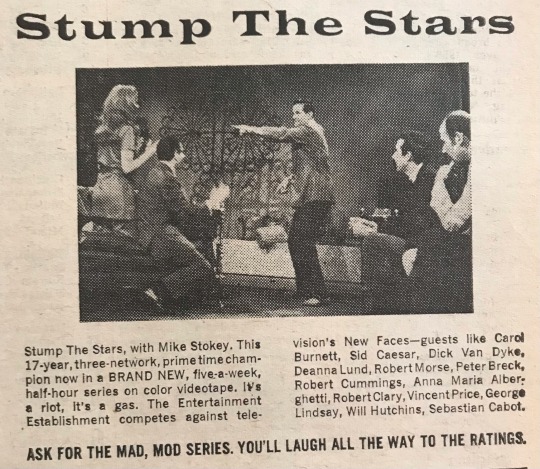
Stump the Stars (1969)
6 notes
·
View notes
Photo
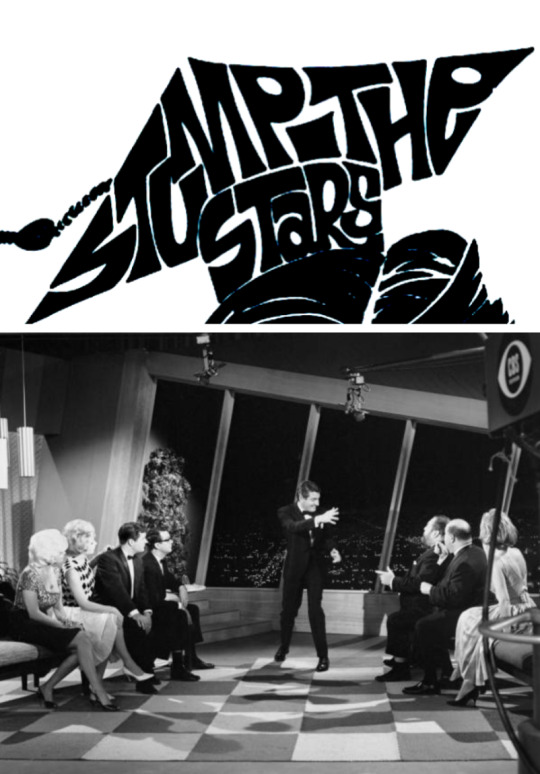
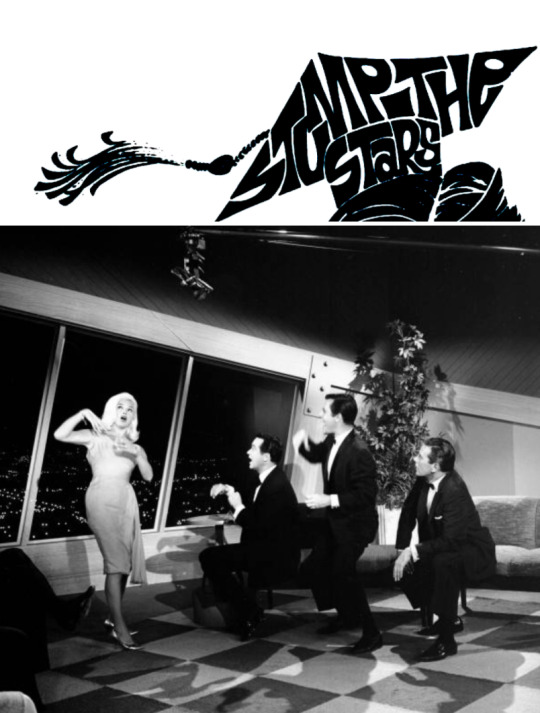
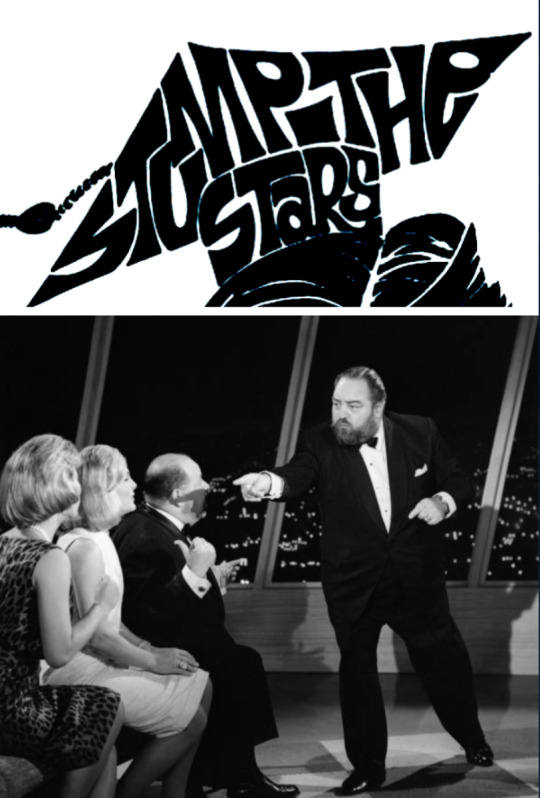
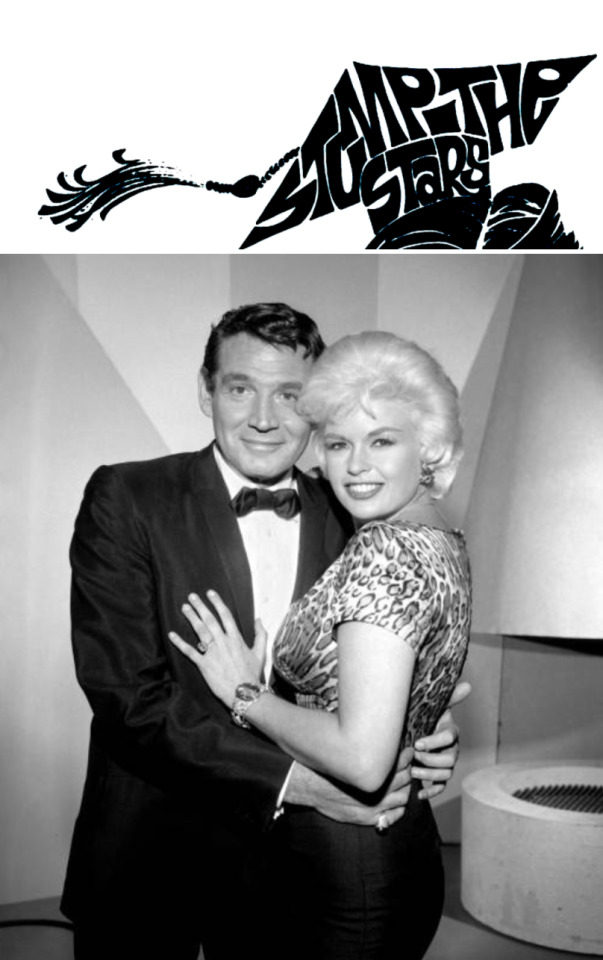
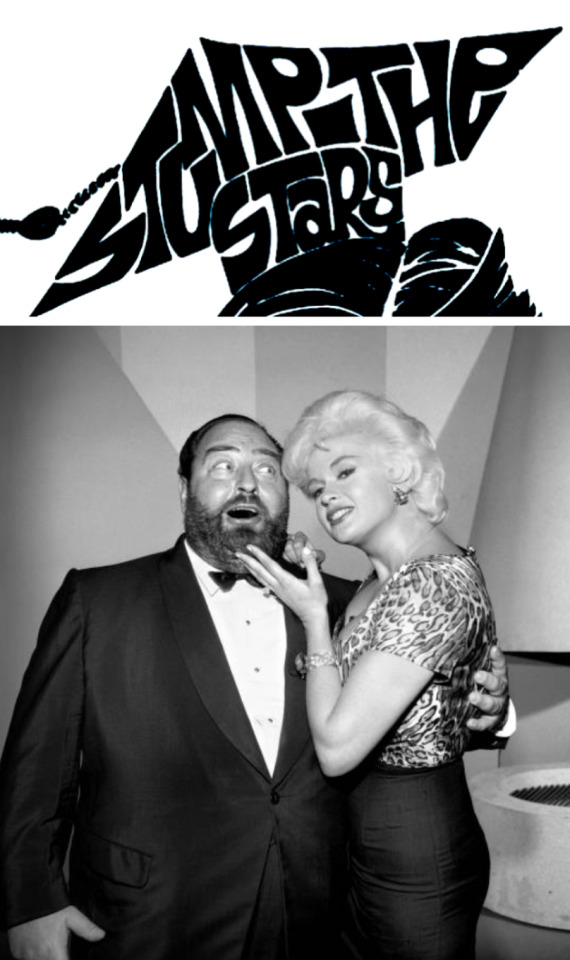
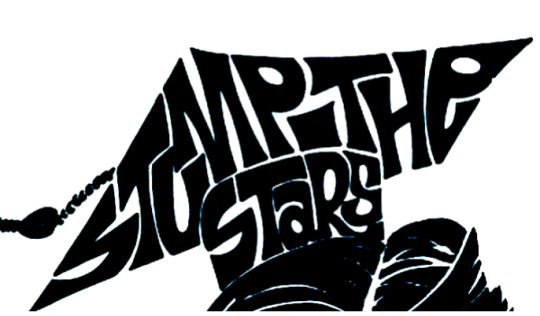


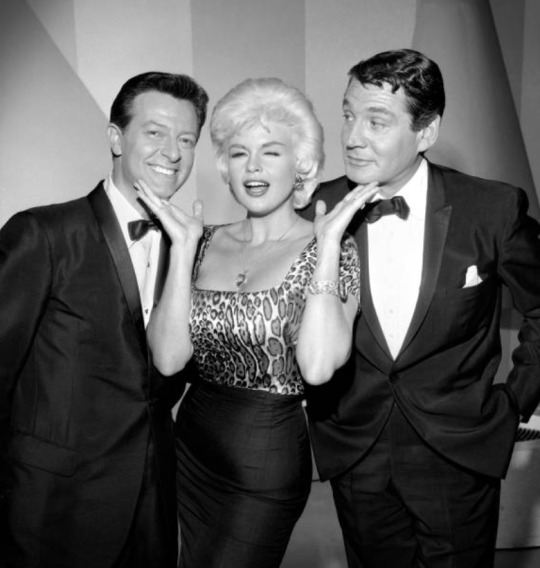
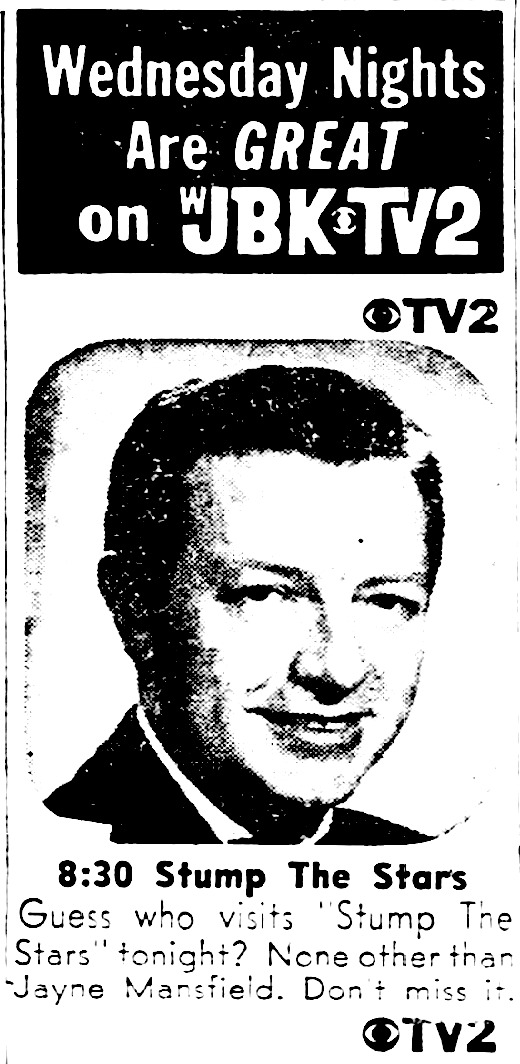
Stump the Stars featuring Jayne Mansfield
29 notes
·
View notes
Photo
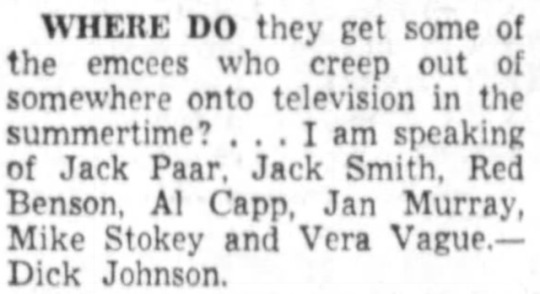
the emcees who creep out
2 notes
·
View notes
Photo
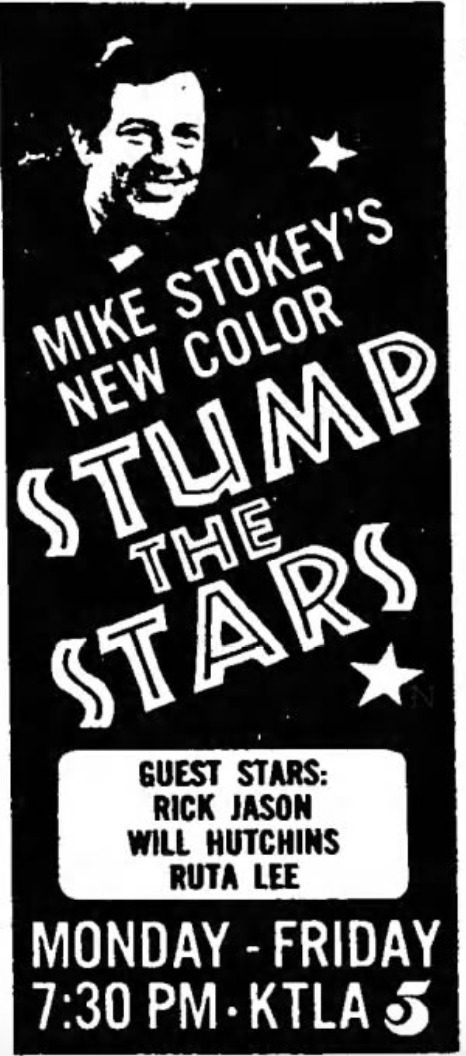
2 notes
·
View notes
Text
TV on TV!
Part 1 ~ The TV Shows of the Lucyverse
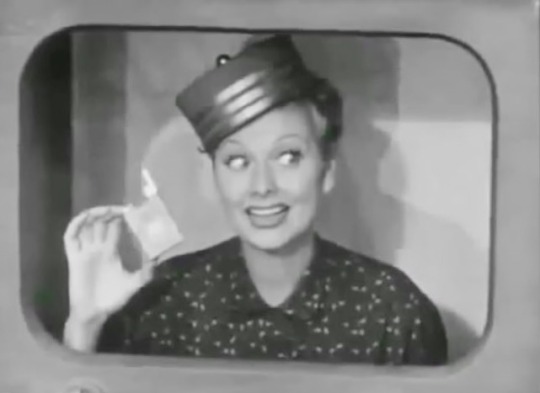
Although it may seem redundant, the worlds created by Lucille Ball on radio and television frequently created and mentioned other TV shows! Here are a few.
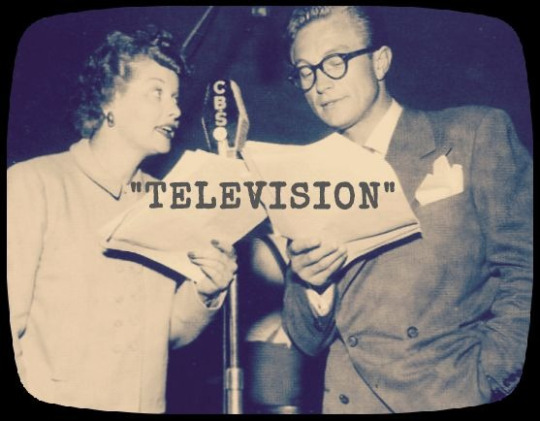
“Television” (1949)
Liz and George’s visit to their next-door neighbors, the Stones, turns into a disaster when George tries to repair the Stones’ new television set by himself.
“Television throws ‘My Favorite Husband’ for a loss, and the whole neighborhood into night courts.” ~ Mason City Globe-Gazette radio listing
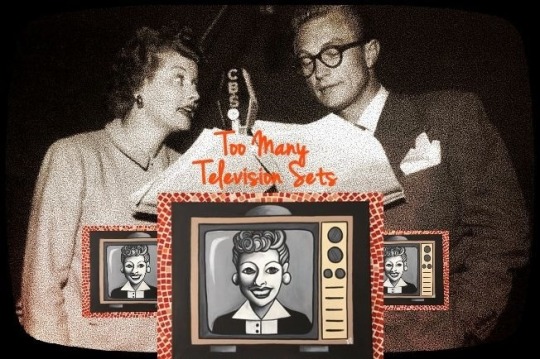
“Too Many Television Sets” (1949)
Liz (Lucilll Ball) can’t get George (Richard Denning) interested in buying a television set, until they spend an evening at the Atterburys, who have one. With his interest piqued, George arranges one be sent over on trial. Little does he know Liz has done the same thing - as have the Atterbury’s!
LIZ: “I never know who won the fights or what Kukla and Fran are doing to Ollie.”
“Kukla, Fran, and Ollie” was a children’s television show created by Burr Tillstrom that aired from 1947 to 1957. Kukla and Ollie were puppets and actress Fran Allison interacted with them. The show won a 1949 Peabody Award and went on to win two Emmys.
IRIS: “I did my knitting last night with Ed Wynn; I had breakfast with Tex and Jinx; and this afternoon I took a bath with Hopalong Cassidy!”
“The Ed Wynn Show” was a variety show broadcast from September 22,1949 to July 4, 1950 on the CBS Television Network. Comedian and former vaudevillian Ed Wynn was the star of the program. Lucille Ball and Desi Arnaz made their television debut as a couple on the show on Christmas Eve 1949, just a few weeks after this episode of “My Favorite Husband”.
“Tex and Jinx” were Eugenia “Jinx” Falkenberg and her husband John “Tex” McCary. The couple were popular radio hosts who began on television in January 1947.
“Hopalong Cassidy” made the leap from books and movies to the small screen on June 24, 1949, kicking off the legacy of the Western on television. These were not new, but simply cut-down versions of the feature films that were in cinemas from 1935 to 1948.
Joe warns the Coopers not to sit behind Iris because they only have a ten inch screen. (Liz adds that Iris has a 16″ neck.) He advises that they visit the Schraders who watch “Pantomime Quiz” and serve sandwiches. “Pantomime Quiz” (later titled “Stump the Stars”), was a television game show hosted by Mike Stokey. Running from 1947 to 1959, it has the distinction of being one of the few television series to air on all four TV networks during the Golden Age of Television. Lucille Ball is reported to have been on the series in December 1947, which would make it her television debut.

“Liz Appears on Television” (1950)
Liz and Iris (Bea Benadaret) make an appearance on a television show celebrating Friendship Week. Their friendship is tested, though, when they discover they've bought the same dress for the occasion. The name of the show is “Love Your Neighbor” the host of which is played by Frank Nelson. The episode mentions two of the same television programs as “Too Many Television Sets” a year earlier.
GEORGE: “I can see it now: ‘Kukla, Fran and Lizzie!”
LIZ: “Try Hopalong Cassidy. He looks good next to a horse!”

“Lucy Does a TV Commercial” (1952)
RICKY: “You’ve never even been on a television show!” LUCY: “Maybe not, but I’ve watched them a lot.”
Lucy gets hired to do a TV commercial on Ricky’s new show, not realizing the health tonic she has to consume is full of alcohol!
LUCY: “When Ricky comes home tonight you’re going to turn on that television set, and you know who’s going to be on it?” FRED: “Well, I can only hope it’s Faye Emerson.”
Faye Emerson was a very glamorous stage and screen actress turned TV hostess who had her own variety show. She wore low-cut gowns bedecked with jewelry and had bleach blonde hair pulled back in a tight bun.

The TV show Ricky hosts is titled “Your Saturday Night Variety”. You can see Lucille Ball waiting in the wings, with the living room set behind her! The TV camera has had its identifying information redacted and replaced by TVC (Television Camera)!
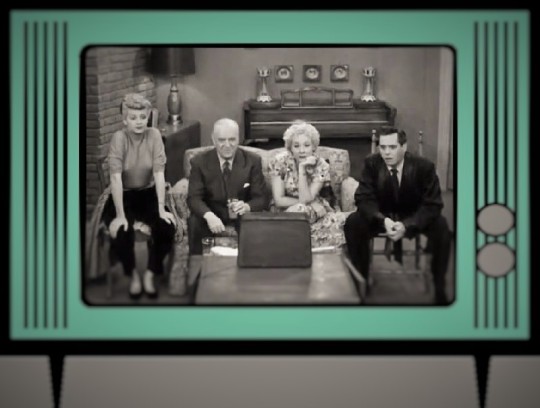
“Lucy Gets Ricky on the Radio” (1952)
When their TV breaks down, the gang tunes in to a radio quiz show. Surprisingly, Ricky correctly guesses the answers to all of the questions, so the next day Lucy signs them up to be on the show. Sitting the radio atop the malfunctioning TVV set, the gang stares intently at the radio, just as they would television. Before the TV breaks down, the foursome are watching a movie, despite poor reception.
LUCY: “That little girl is Margaret O'Brien, isn’t it?” RICKY: “Look again - it’s Shirley Temple.” FRED: “Look again - it’s Mary Pickford!”
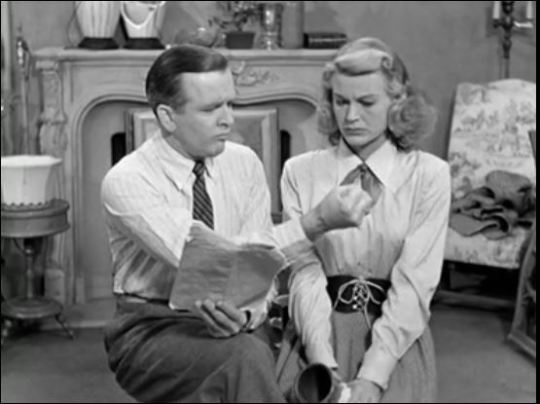
“New Neighbors” (1952)
“That’s pretty corny dialogue, even for television. Well, it’s a living!”
New neighbors have just moved in to 323 East 68th Street. When Lucy gets stuck hiding in their closet, she overhears the couple practicing their lines for a TV show and jumps to conclusion that they are foreign spies! Hayden Rorke and K.T. Stevens play the acting couple.
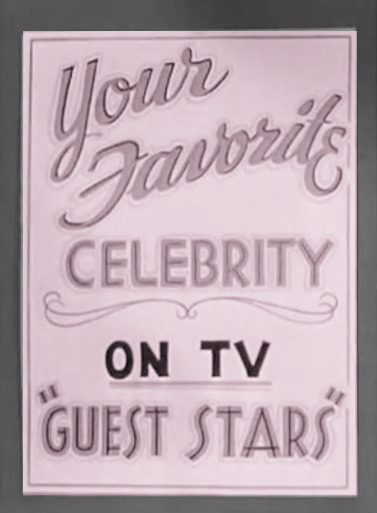
“The Handcuffs” (1952)
To keep Ricky home, Lucy handcuffs them together - but then doesn’t have the key. Ricky needs to host a TV show that evening - “Your Favorite Celebrity Guest Stars on TV”. Lucy has no choice but to be part of the act - if only her left arm!

Ricky is interviewed and introduced by Veola Vonn, real-life wife of Frank Nelson.
“Readers keepers, losers go look at television!” ~ The Black Eye (1953)

“Ricky and Fred Are TV Fans” (1953)
Lucy and Ethel feel the boys are ignoring them to watch the fights on television. They go to elaborate lengths to stop their obsession. The championship boxing match that Ricky and Fred are watching pits 'The Kid' against Murphy. A heavyweight boxer named Irish Bob Murphy famously fought Jake LaMotta in June 1952. Kid Gavilán was a welterweight boxer from (unsurprisingly) Cuba, who was world champion in 1952. Naturally Ricky bets on 'The Kid', while Irishman Fred is in Murphy's corner.
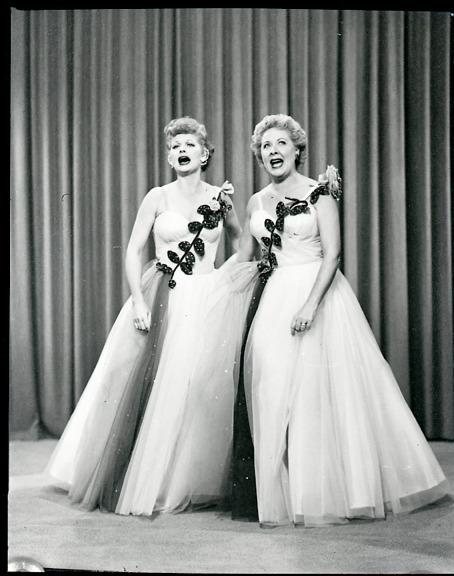
“Lucy and Ethel Buy the Same Dress” (1953)
“We have a whole half hour on television!”
Lucy and Ethel are excited to appear on TV with their club, until they buy the same dress, which tests their “Friendship”.

Ricky’s solo on the TV show is "Vaya con Dios.” When Ricky is introducing his song, he says “It’s become quite popular in the last couple of months.”
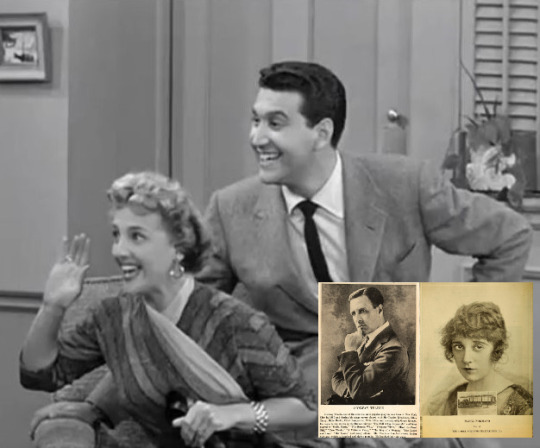
“Baby Pictures” (1953)
Trying to impress the Ricardos about his TV station’s offering of motion pictures Charlie Appleby says:
CHARLIE: “We’ve got the newest moving pictures in town. I bought a block of films yesterday, and I want to tell you that they’re going to make television stars out of some of the actors. Now, just remember their names: Conway Tearle and Mabel Normand.”
Both were silent film stars and died in the 1930s!
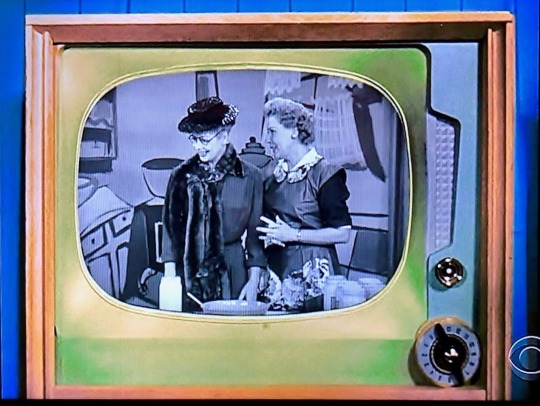
“Million Dollar Idea” (1954)
Lucy bottles her own salad dressing, then she and Ethel go on TV to sell it.

They appear on “The Dickie Davis Show,” a four-hour daily TV program produced at the station run by Caroline Appleby's husband, Charlie. Frank Nelson plays Dickie Davis.

“The Charm School” (1954)
The episode opens with a party where the men are in one room and the women in the other. At the party, the men talk about how soon color might be introduced on television.
BILL: “Well, there are two schools of thought on that matter. Some people think it’s just around the corner. Others think it’s gonna be a year or two.”
In reality, it was just six months away - but not on CBS and not on “I Love Lucy.” Ricky says he read an article by Harry Ackerman, a TV producer who supported the filming of “I Love Lucy” in front of a live studio audience.

“Home Movies” (1954)
“If I want to see old movies, I’ll watch television.”
When his feelings get hurt that no one is interested in his home movies, Ricky refuses to include Lucy, Fred and Ethel in his new TV pilot film. Lucy, however, has a plan to get into the action anyway!
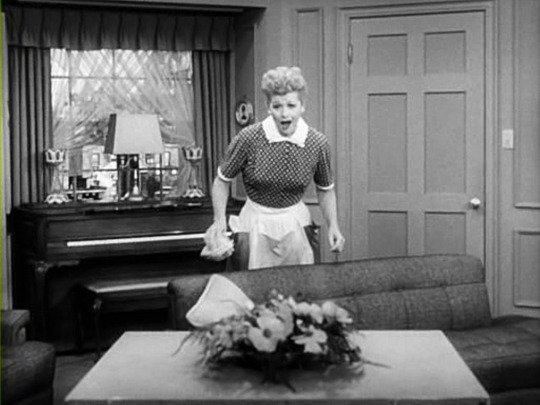
“Ricky’s Hawaiian Vacation” (1954)
Lucy plans to win a trip to Hawaii on a television quiz show so that she can go with Ricky on a work trip.
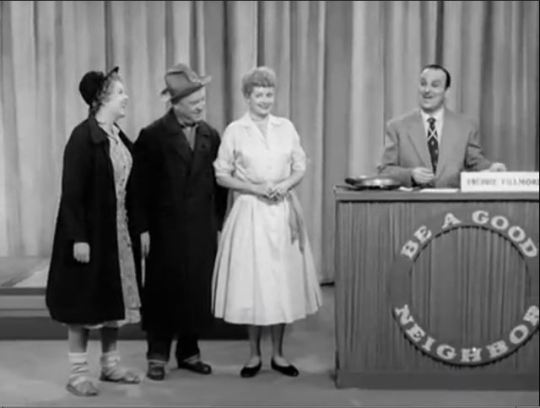
The TV show is called “Be A Good Neighbor” and it is hosted by Freddy Fillmore, who has finally made the leap from radio to television. In reality, many radio shows made the transition to television during the early 1950s.
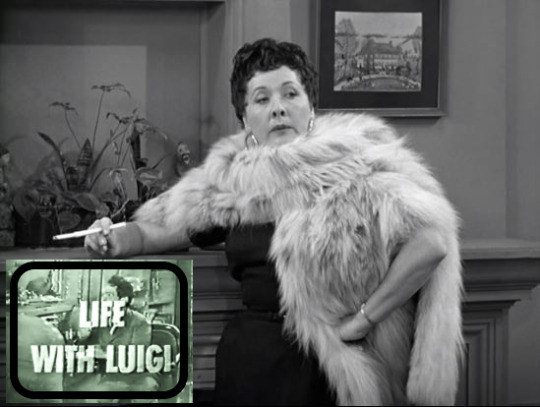
“The Black Wig” (1954)
When Ethel tries on Lucy’s wig, Fred says it looks more like life with Luigi.
“Life With Luigi” was a radio comedy that transferred to television. It premiered on CBS one season after “I Love Lucy,” but was not a success, lasting only a year before briefly returning to radio. One of the 'Italian' characters was played by Alan Reed, who later voiced Fred Flintstone. Two years earlier, both “Luigi” and “Lucy” were part of “Stars in the Eye”, a 1952 CBS special that celebrated the opening of Television City Studios.
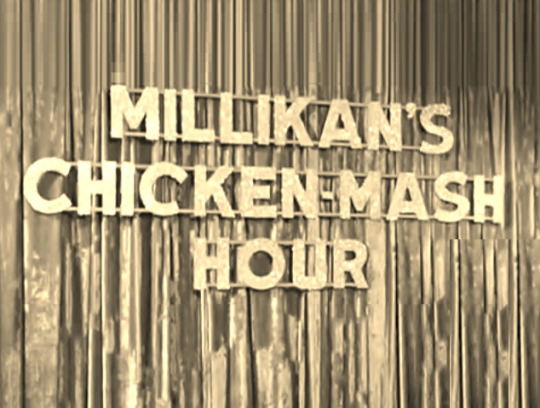
“Tennessee Ernie Hangs On” (1954)
The gang and Ernie sing on television to make money to send him home.
“Millikan's Chicken-Mash Hour” was a fictional country music TV program, but there were real-life examples as well, the first ever called “Village Barn,” broadcast from 1948 to 1950 from a New York City nightclub. Others included “Hayloft Hoedown,” “ABC Barn Dance,” “Saturday Night Jamboree,” “Windy City Jamboree,” “The Old American Barn Dance,” and “Midwestern Hayride” - all on rival networks. The most famous entry into the genre, “Hee Haw,” did air on CBS, but didn't come along until 1969.

“Mr. and Mrs. TV Show” (1954)
“This is going to be one of the biggest television programs to hit town in years!”
Ricky has a chance to do an ‘at-home' TV breakfast show, and naturally Lucy wants to be in it. Things go well until Lucy discovers Ricky only let her do the show because the sponsor insisted. Then revenge is what is served for breakfast! The live show is named “Breakfast with Ricky and Lucy.”

“Breakfast with Ricky and Lucy” was inspired by "Breakfast with Dorothy and Dick." This daily radio chat show aired from 1945 through 1963, and starred Dorothy Kilgallen, journalist and reporter, and her husband Richard Kollmar, a Broadway actor and producer. There was another popular husband and wife radio breakfast show called “Hi Jinx” that starred model and actress Jinx Falkenburg and publicist Tex McCrary, which made the leap to television in 1948.
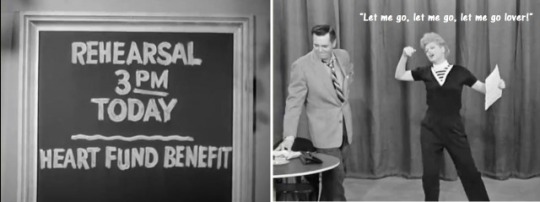
“Bullfight Dance” (1955)
When Lucy is asked to write an article for Photoplay about what it's like being married to Ricky, she uses it to blackmail him to get to perform in a TV benefit for the Heart Fund.

The scenes of the benefit television show "Coast-to-Coast" for the Heart Fund, hosted by Ricky and featuring Lucy in the bullfight number of the episode's title, are introduced with an establishing shot of the newly-opened CBS Television City building at 7800 Beverly Boulevard in Los Angeles, California. Although “I Love Lucy” was one of CBS’s strongest shows, Desilu was already happily ensconced at Ren Mar Studios.
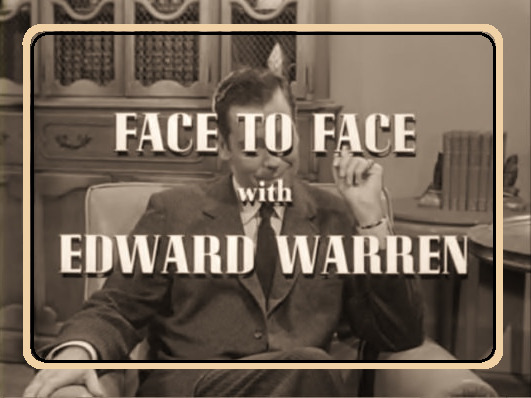
“Face to Face” (1955)
Lucy and Ricky appear on a TV interview show from their apartment. But his new agent says the apartment is a dump, and urges them to move into ritzier quarters. The agent tells Ricky that he thinks he’s got him “planted on the Sullivan show next month”. “The Ed Sullivan Show” (aka “Toast of the Town”) was a Sunday night staple on CBS. In addition to hosting performers on the stage of their New York theatre, celebrities would also be in the audience, and get introduced by Sullivan to get camera time. This is what is meant by “planted” on the Sullivan show.

Ed Warren (Elliott Reid) is a parody of Edward R. Murrow (right), who hosted the interview show “Person to Person” from 1953 to 1959. Just like Murrow, Warren signs off by bidding the audience “Good night, and good luck!”
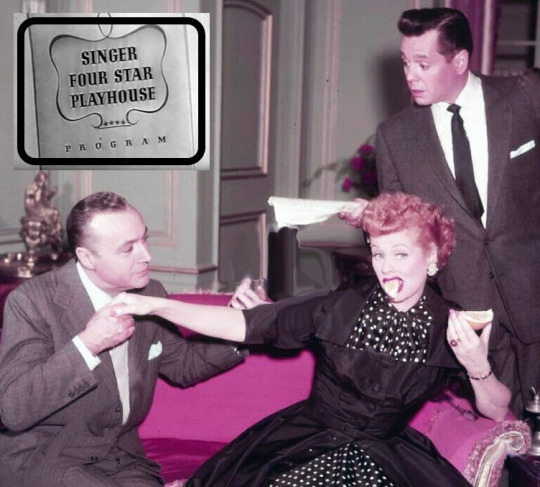
“Lucy Meets Charles Boyer” (1956)
Lucy thinks every man she sees is film star Charles Boyer. When she spots the real Boyer, Ricky convinces him to pretend to be a second rate actor who just happens to look like the star. Boyer mentions “Four Star Playhouse” (1952-56), an anthology series sponsored by Singer and Bristol Myers. The premise of the CBS series was that Boyer, Ida Lupino, David Niven, and Dick Powell would take turns starring in episodes.

“Lucy and Superman” (1957)
Lucy brags that she can get Superman for Little Ricky’s birthday party. When he isn’t available, Lucy dresses up as the man of steel instead.

As the episode opens, Ricky and Little Ricky are watching “Adventures of Superman” on TV. Superman fans have said that this excerpt was not from the original series, but created for “I Love Lucy” using Reeve’s double. The wires holding Superman up are clearly visible in the shot and it was commonly known that Reeve disliked using wires because of an incident early in the show’s creation.
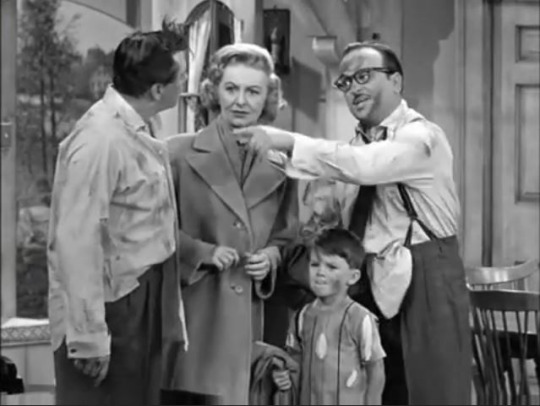
“Lucy Gets Chummy with the Neighbors” (1957)
When a misunderstanding about the between Betty (Mary Jane Croft) and Lucy spreads to the boys, Ralph (Frank Nelson) rescinds his offer for Ricky to appear on one of his advertising agency's TV shows, saying “We'll get Cugat!” For Ricky, this is the ultimate insult. In the early days of television, advertising agencies could dictate whether a show would be aired or not. Such was the case with “I Love Lucy” in 1951. Biou Advertising represented Philip Morris, the show’s sponsor during the first several years.
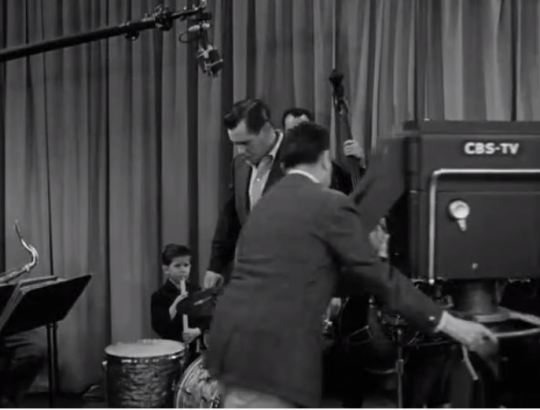
“Lucy Goes To Sun Valley” (1958)
When Ricky, Little Ricky and Fred have to stay home to work on a television show, Lucy reluctantly takes Ethel to Sun Valley.

“Lucy Goes To Alaska” (1959)
The Ricardos and Merztes go to Alaska where Ricky and Fred have bought some land and Ricky is doing a TV show. When Red Skelton’s partner fails to appear, Lucy is recruited to perform with him.

“Lucy Wants a Career” (1959)
“I can’t believe it! Lucy on television!”
Looking for fulfillment outside the home, Lucy takes a job as a Girl Friday for Paul Douglas on the morning TV show “Early Bird.”
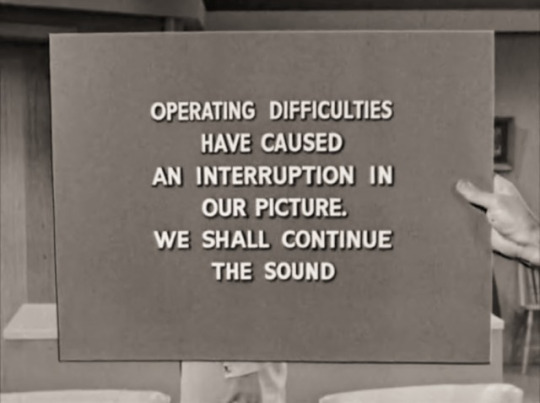
The first morning news program on television was “Three To Get Ready,” a local show hosted by comedian Ernie Kovacs that aired in Philadelphia from 1950 to 1952. Although it was mostly entertainment-oriented, the program did feature news and weather segments. Its success prompted NBC to look at producing something similar on a national basis and in January 1952 the "Today Show” premiered. CBS (Lucy's network) entered the field in 1954, but was never able to compete in the ratings.

“Lucy Meets the Mustache” (1960)
Near the end of the episode, Ernie Kovacs tells Ricky to "take a good look" at Crandall (aka Lucy in disguise).
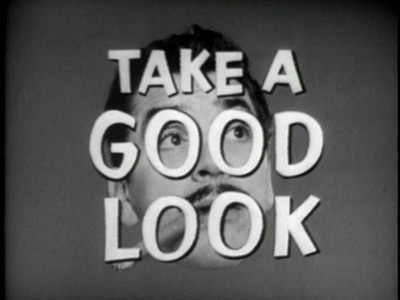
“Take a Good Look” was the name of a TV quiz show Kovacs moderated at the time. It involved a panel guessing answers based on short skits.
#Lucille Ball#Desi Arnaz#Desilu#Vivian Vance#William Frawley#Frank Nelson#Ernie Kovacs#Charles Boyer#Paul Douglas#I Love Lucy#The Lucy-Desi Comedy Hour#TV#Red Skelton#Mary Jane Croft#Edward R. Murrow#Superman#Hayden Rorke#CBS
10 notes
·
View notes
Text
LUCY’S FIRSTS & LASTS
The beginnings and ends of Lucille Ball’s more than 40 year television career.
THE FIRST time Lucille Ball appeared on television ~ December 1947

This was a local, not national, television program called “Mike Stokey’s Pantomime Quiz Time.” Lucy loved to play charades and later appeared on a similar show called “Body Language.�� Records are vague, so the year may have been 1949, the same year Ball appeared on “Texaco Star Theatre.”
THE LAST time Lucille Ball appeared on television ~ March 29, 1989

Lucy joined Bob Hope as a presenter of new talent on the 61st Annual Academy Awards. Three weeks later, Lucille Ball entered the hospital with chest pains. She underwent heart surgery and appeared to be recovering, but several days later she slipped into unconsciousness and died on April 27, 1989, at age 77.
THE FIRST time television viewers saw Lucille Ball in an acting role ~ October 15, 1951

Lucille Ball’s TV acting debut came as Lucy Ricardo on “I Love Lucy” in “The Girls Want To Go To A Nightclub” (ILL S1;E1). It established Lucy as a typical American housewife - doing dishes, naturally. She is joined by Vivian Vance as her friend, landlord, and neighbor, Ethel Mertz, beginning one of the greatest partnerships in television history. Although this was the first episode aired, it was not the first episode shot.
THE LAST time television viewers saw Lucille Ball in an acting role ~ November 15, 1986

Although Ball made appearances as herself after this episode, this was her last time in an acting role, as Lucy Barker on “Life With Lucy” in “Mother of the Bride” (LWL S1;E8). The vaudeville trope of a pie in the face is a fitting farewell to the Queen of Comedy. She is joined by Audrey Meadows (”The Honeymooners”), as her sister Audrey Everett, a role that, had the series not been cancelled, may have returned to the show. Although this was the last episode aired, it was not the last episode shot.
THE FIRST time Lucille Ball acted on camera for television ~ September 8, 1951

This is the first shot of Lucille Ball in the first episode of “I Love Lucy” ever filmed, “Lucy Thinks Ricky Is Trying To Murder Her” (ILL S1;E4). Feeling it did not showcase Lucille Ball’s talents as much as “The Girls Want To Go To A Nightclub,” this episode was aired fourth instead. Notice that Ball’s trademark Lucy Ricardo hairstyle has not yet been established.
THE LAST time Lucille Ball acted on camera for television ~ November 17, 1986

This is the final scene from “World’s Greatest Grandma” (LWL S1;E13). “Life With Lucy” was cancelled after its initial order of 13 episodes. This episode was due to air on December 20, 1986 and a 14th show was planned titled “T’was the Flight Before Christmas.” Like her final TV appearance on the Oscars, Ball is flanked by a ‘new generation of actors’, here playing Lucy Barker’s grandchildren, Jenny Lewis and Philip Amelio.
#Lucille Ball#Lucy#I Love Lucy#Vivian Vance#Lucy Ricardo#Ethel Mertz#Pantomime Quiz Time#Mike Stokey#1947#1951#1989#1986#Life With Lucy#Philip Amelio#Bob Hope#Jenny Lewis#Audrey Meadows#Academy Awards#Oscars
1 note
·
View note
Photo
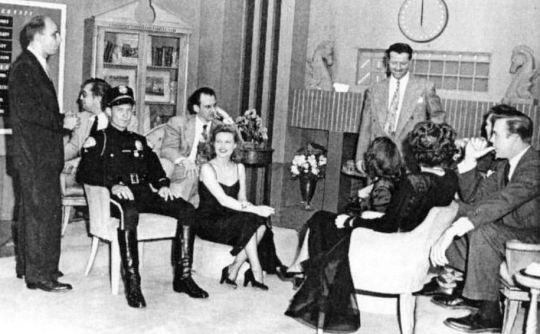

Vincent Price || On set || “Pantomime Quiz” || From 'Hans Conried: A Biography' by Suzanne Gargiulo || 1950 || 2 pix
With Frank DeVol, Los Angeles police officer, Hans Conried, Gale Robbins, Mike Stokey, Carol Hughes, Elaine Riley, Scott Brady and Lief Erickson.
14 notes
·
View notes
Photo
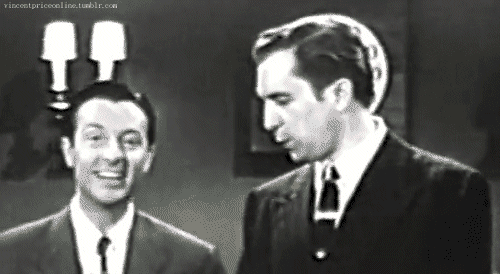
Vincent Price & Mike Stokey || Whistle || “Pantomime Quiz” || 1951 || gif
How adorable is he?! A whistle, an eyebrow raise, a wink complete with a mouth click. I could seriously watch him on this show non-stop. He’s just so goofy and fun! And his playful banter with Hans is too cute.
54 notes
·
View notes